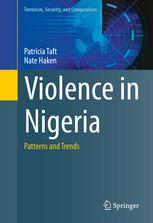

Most ebook files are in PDF format, so you can easily read them using various software such as Foxit Reader or directly on the Google Chrome browser.
Some ebook files are released by publishers in other formats such as .awz, .mobi, .epub, .fb2, etc. You may need to install specific software to read these formats on mobile/PC, such as Calibre.
Please read the tutorial at this link: https://ebookbell.com/faq
We offer FREE conversion to the popular formats you request; however, this may take some time. Therefore, right after payment, please email us, and we will try to provide the service as quickly as possible.
For some exceptional file formats or broken links (if any), please refrain from opening any disputes. Instead, email us first, and we will try to assist within a maximum of 6 hours.
EbookBell Team

4.7
16 reviewsThis book takes a quantitative look at ICT-generated event data to highlight current trends and issues in Nigeria at the local, state and national levels. Without emphasizing a specific policy or agenda, it provides context and perspective on the relative spatial-temporal distribution of conflict factors in Nigeria. The analysis of violence at state and local levels reveals a fractal pattern of overlapping ecosystems of conflict risk that must be understood for effective, conflict-sensitive approaches to development and direct conflict mitigation efforts. Moving beyond analyses that use a broad religious, ethnic or historical lens, this book focuses on the country’s 774 local government areas and incorporates over 10,000 incidents coded by location, date and indicator to identify patterns in conflict risk between 2009 and 2013. It is the first book to track conflict in Nigeria during this period, which covers the Amnesty Agreement in the Niger Delta and the birth of Boko Haram in the North. It also includes conflict risk heat maps of each state and trend-lines of violence. The authors conclude with a discussion of the nuanced factors that lead to escalating violence, such as resource competition and trends in terrorism during this critical point in Nigeria’s history. Violence in Nigeria is designed as a reference for researchers and practitioners working in security, peacebuilding and development, including policy makers, intelligence experts, diplomats, national defense and homeland security experts. Advanced-level students studying public policy, international relations or computer science will also find this book useful as a secondary textbook or reference.